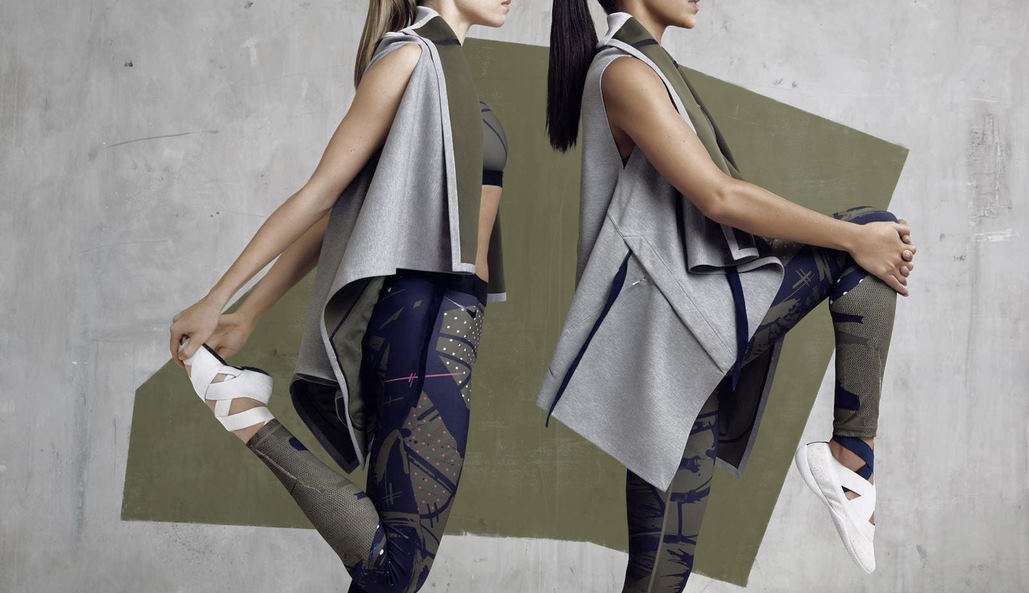Athleisure, the trend of wearing athletic apparel in non-athletic settings, has taken the fashion industry by storm in recent years. What started as a comfortable and convenient clothing choice for gym-goers has transformed into a style statement that has revolutionized the fashion and design landscape. The popularity of athleisure has blurred the lines between sportswear and fashion, creating a new fashion category that seamlessly combines functionality and style. We will also discuss the sustainability challenges posed by the trend and how consumers can play a role in promoting sustainable fashion choices.
The intersection of sportswear and fashion
The intersection of sportswear and fashion has given rise to one of the biggest fashion trends of recent years – athleisure. What started as a practical clothing choice for athletes and gym-goers has now become a style statement that transcends the boundaries of sportswear. The fusion of sportswear and fashion has transformed the way people perceive fitness and fashion, creating a new category of clothing that prioritizes both comfort and style.
The trend of sportswear as fashion can be traced back to the 1980s, when the popularity of hip hop culture led to the emergence of streetwear fashion. This marked the beginning of the trend of wearing athletic apparel in non-athletic settings. However, it wasn’t until the early 2010s that athleisure exploded in popularity, thanks to celebrities and social media influencers who popularized the trend.
Today, fashion designers are increasingly incorporating sportswear elements into their collections, blurring the lines between sportswear and high fashion. From Alexander Wang’s collaboration with Adidas to Rihanna’s Fenty Puma collection, sportswear is now a prominent feature in many designer collections.
Athletic brands have also taken note of the trend and are making a foray into the fashion industry. Brands like Nike and Adidas have collaborated with high-end fashion designers and are launching their own fashion lines, catering to the growing demand for sportswear as fashion.

The impact of athleisure on design
The impact of athleisure on design has been far-reaching, transforming not only the fashion industry but also the way we think about clothing design. The rise of athleisure has given designers the freedom to experiment with technical fabrics and create clothing that is both functional and fashionable.
One of the biggest impacts of athleisure on design has been the use of technical fabrics. These fabrics are designed to provide specific functionality, such as moisture-wicking or UV protection, and have found their way into mainstream fashion. From high-performance activewear to designer streetwear, technical fabrics have become a staple of modern fashion design.
The rise of athleisure has also given rise to functional fashion, a trend that prioritizes clothing that serves a specific purpose. This trend has given designers the freedom to create clothing that is both practical and stylish, such as jackets with built-in pockets or shoes with shock-absorbing soles.
Athleisure has also influenced streetwear fashion, with many streetwear designers incorporating sportswear elements into their designs. This has given rise to a new style of streetwear that prioritizes comfort and functionality, while still maintaining a high level of fashion.

Athleisure and the changing culture of fitness
Athleisure has become synonymous with the changing culture of fitness that has taken the world by storm. In recent years, there has been a growing emphasis on fitness and wellness, with people prioritizing physical activity and healthy living. This shift in culture has had a significant impact on the fashion industry, influencing the trends that we see on the runway and on the streets.
As fitness culture continues to grow, so does the demand for clothing that is both functional and fashionable. Athleisure has emerged as the perfect solution, offering versatile clothing that can be worn both in and out of the gym. From leggings to sports bras, athleisure clothing is designed to provide comfort and support, while still maintaining a high level of style.
The popularity of athleisure has also given rise to a new set of fashion trends, as people look for clothing that reflects their active lifestyle. This has led to an increase in the use of technical fabrics and performance-enhancing features in fashion design, creating clothing that is both fashionable and functional.
Versatility is key in athleisure clothing, as it allows people to seamlessly transition from their workout to their everyday activities. This has become an important factor in fashion design, with designers creating clothing that is versatile enough to be worn in a variety of settings.

